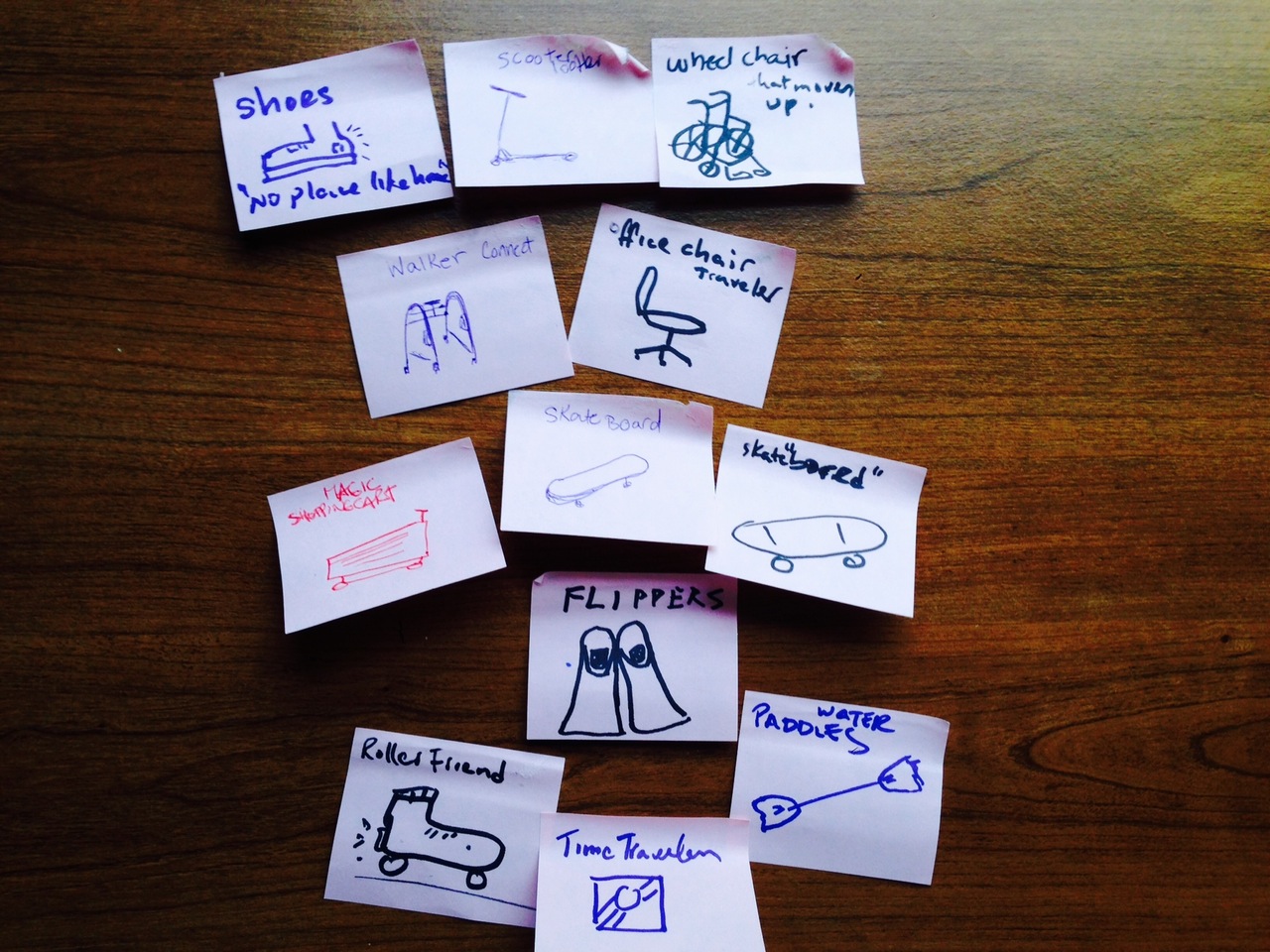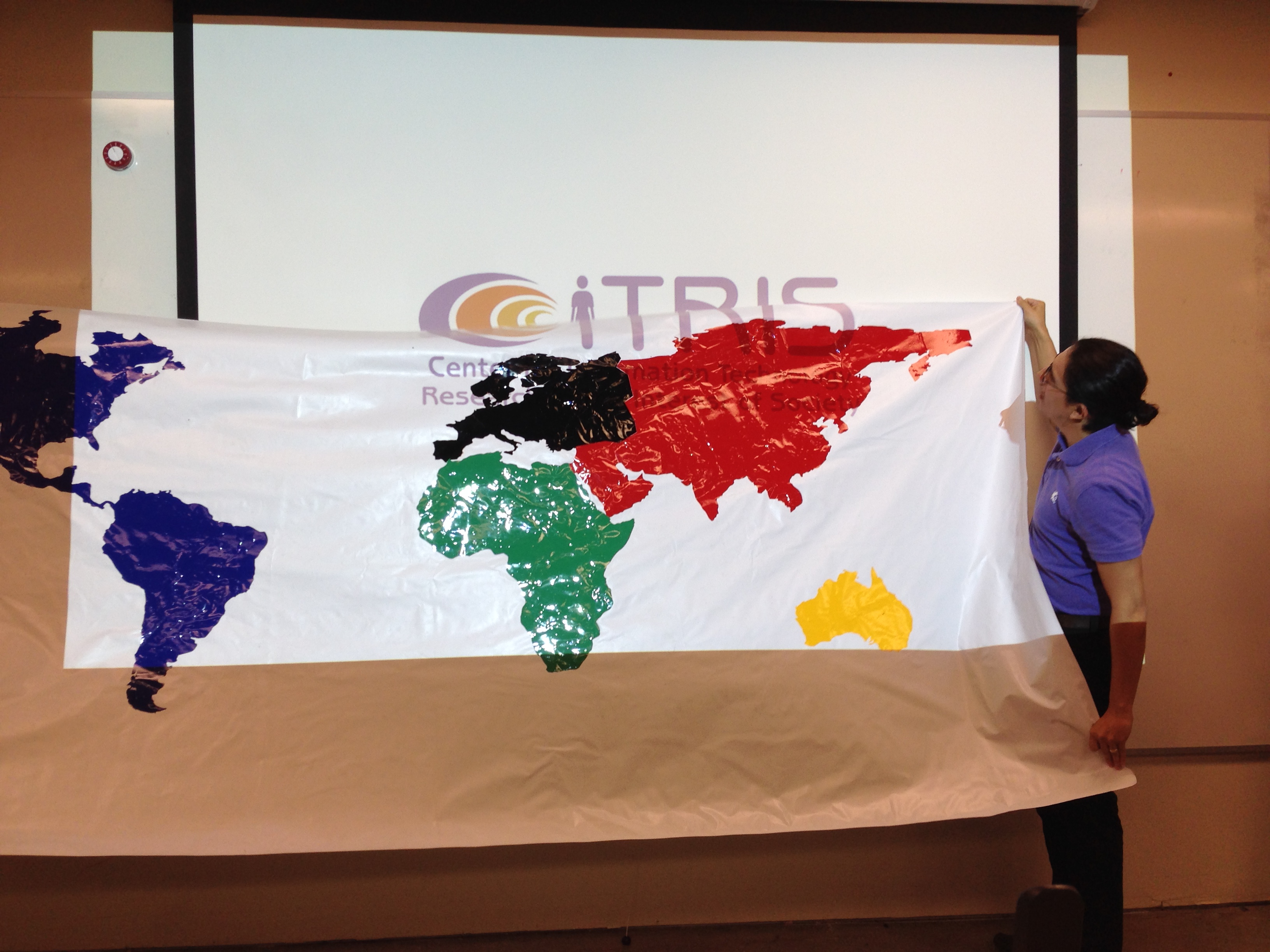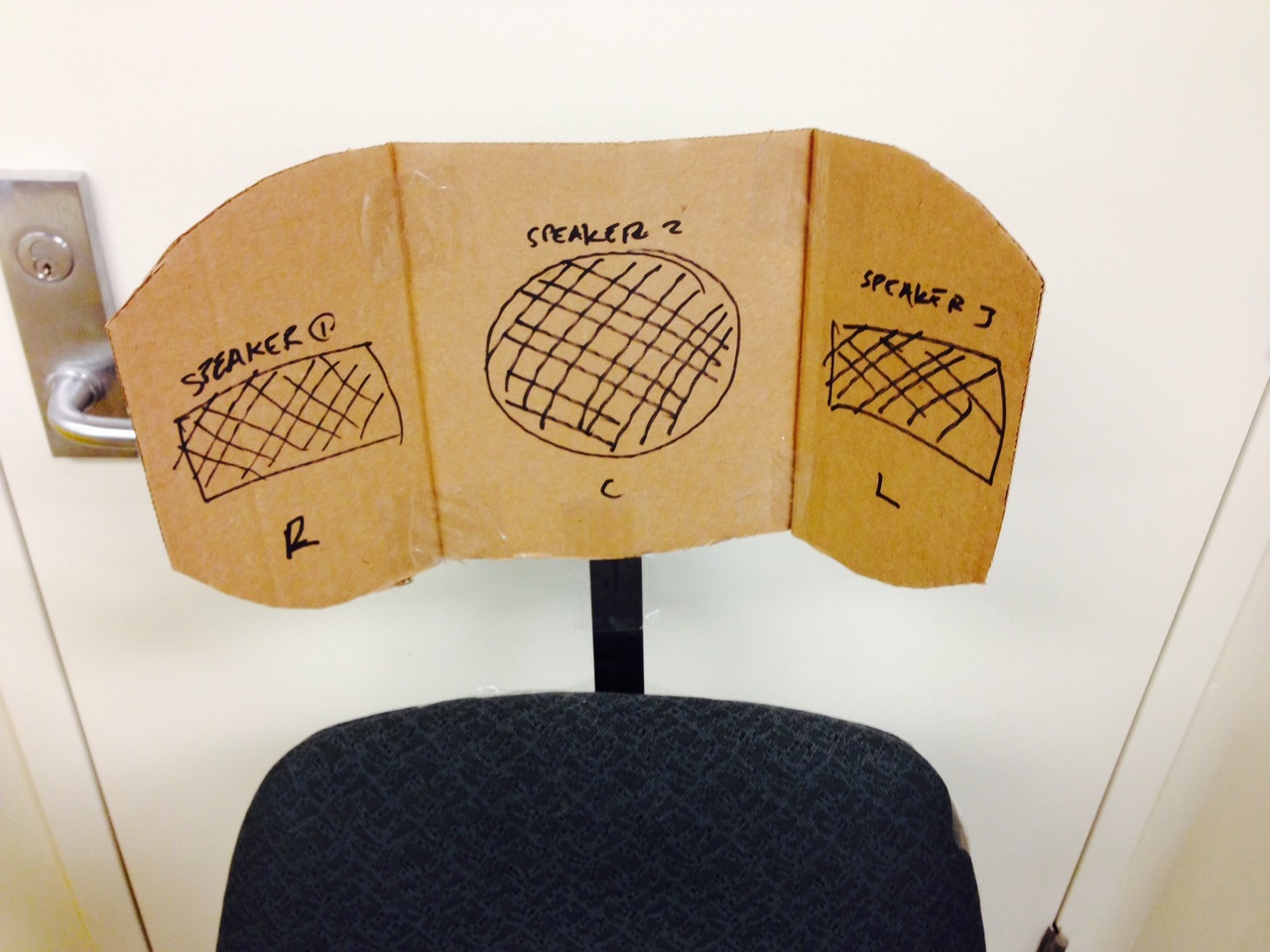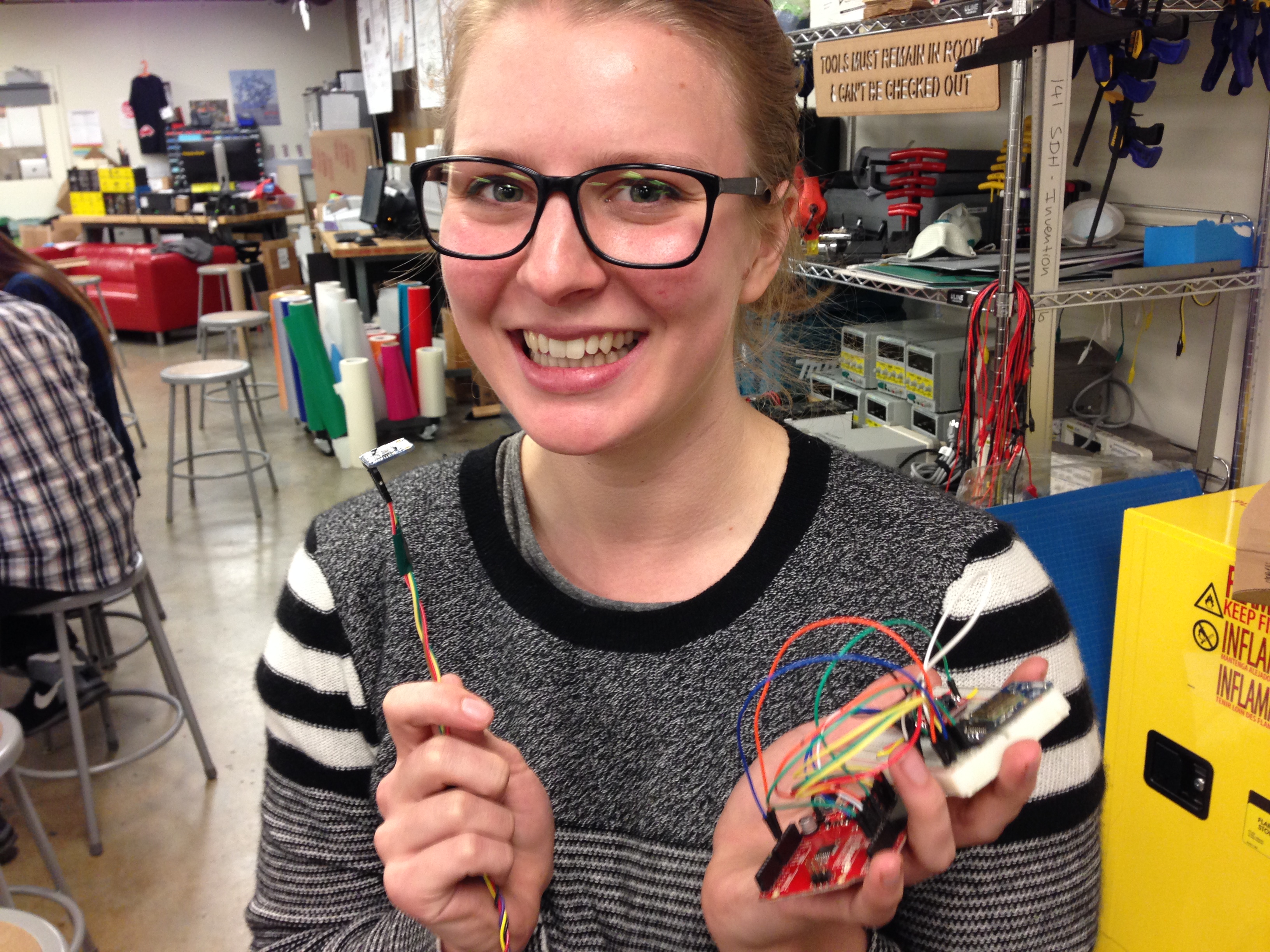The Problem
“In this [assigment] you are challenged to collage a simple human power transportation technology with a novel interactive experience. What designs result when skateboards are equipped with accelerometers, a scooter knows it’s mileage, a stroller can talk, a wheelchair has superpowers?”
We wanted to push the boundaries of what transportation meant. What if we played with the movement of the mind instead of just the body? With this in mind, we developed the ChairVoyager.
The Solution
We believe that transportation is more than a physical movement from one spot to another. Transportation can be mental. Transportation can occur within time and space.
Our group wanted to examine the idea of feeling transported to far away places without actually being there. We brainstormed a large variety of ideas, and eventually settled on an a special office chair the plays back curated news podcasts from the country on the World Mat they land on. These news stories are also shared via Wifi with the users electronic devices for future reference.
It begins as a simple office chair with an accompanying map rug. When you need a break, lean back. Push the chair over the rug. As you travel over various countries, close your eyes and listen to news stories from around the world. The chair has a color sensor on the bottom that detects which continent you are over and reads you news from that specific continent.
Brainstorm and Ideation
Our initial design choice for our transportation was a one called “no place like home” shoes. It was intended to empower kids to be able to contact parents without the need to yell moms’ names or use a cellphone. The idea was that a child would wear specially designed shoes with BLE capability. These shoes, once tapped against each other a certain number of times, would send a message to a parent’s cell phone to come and get the kid. We thought it would be a great way to provide safety and an element of playful enchantment as the show would respond by saying “There is no place like home” to the child - as Dorothy would say in the movie The Wizard of Oz.

However, initial user interviews revealed parents’ fears of safety and issues with giving kids the autonomy to decide when to reveal their location. The majority of parents were against a design as the one envisions and said they would not allow their children to wear such shoes. Even though we rejected the shoes idea due to various safety concerns, we started to think about transportation as more than just physical, embodying aspects such as auditory or sensual signals that are tied with transportation.
Design Process
We thought of transportation beyond the physical. We considered mental transportation and transportation through time.
The concept of a traveling chair fit in with what we wanted to accomplish and we began formulating ways to “feel” as though the user could travel to different countries by moving over set locations on the floor. User interviews of people working in office settings approved the need for a fun way to engage the user during their breaks. People sit in their office chairs and want to kick back for a break. Instead of having to pull out a phone and scroll through a smart device, we thought that there should be a better way to “explore” the world, naturally of course.
Hence we created ChairVoyager. As the user kicks back for a break, the smart light color sensor detects what country on the World Mat and plays back curated news headlines from that country.
Creating a Natural Interface
A key design choice our group made was deciding how much interaction to require of the user. Smart phones require a lot of “unnatural” interaction: typing, selecting pages, etc. We aimed for something more natural, more intuitive. Rolling the chair over different parts of a rug seemed like a natural control system.

We considered hiding exactly what different parts of the rug meant, so that the user could suddenly find themselves in the Congo with no visual cue. However, we decided that users would get frustrated without an understandable control system. A color-coded map outlining the continents gives users a visual cue about their location, but leaves an opportunity for the users to be greeted with unexpected and diverse news stories from a variety of countries in that continent. The bold colors make it clear where one area ends and another begins; the white background could also be programmed to play naval-related news or whale songs. Also the low resolution (big continents) made it easy for the user to land on their desired continent.
Speaking to the User

Another important design choice was the use of audio. Originally we thought of having a loudspeaker attached to the backrest of the chair and it would play the tracks in a high volume, enough for everyone in a room to hear it. After user research, we realized that noise is not a welcome solution in an office setting. We began thinking about different solutions and honed in on a surround sound quiet headrest with very localized sound where only the user sitting in the chair would hear the audio piece. The sound is not only localized, but also focused and amplified leading to a clean listening experience. Also, office neighbors can work uninterrupted, barely making out a muffled sound, not knowing that the their friend is actually traveling in the Middle East at that moment.
Lessons Learned
ChairVoyager is a very complete prototype. There are no changes I would make in this iteration of the product. However, what we built opens the doors to a variety of iteractions.
Imagine, for fun, iterations where you hear music from different countries or genres. Imagine using a random rug from the store to see what happened, or specialized rugs with abstract patterns so what the user hears is a surprise. There’s a variety of customizations and personalizations ChairVoyager could take on as a consumer product.
On the more utilitarian side, ChairVoyager provides an interesting design option for museum tours. Imagine an art gallery where the wheelchaired tours come with built-in unintrusive speaker system. As the wheelchair passes large colored dots on the floor, audio for specific exhibits plays automatically. Alternatively, imagine an exhibit for children, where riding around a map of an important city helps the child unfold the story of the city. Or, imagine a city tour that reacts to where you are. The possibilities for application are endless.


